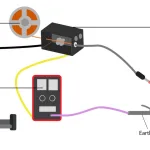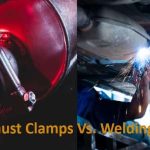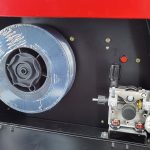There are many ways of joining or filling gaps in pieces of metal. Welding, soldering, and brazing are the most prominent techniques for doing this work. But you need to have an understanding before applying any of them. What about their distinctions, advantages, and applications? Worry no more! From this post, you will get detailed information about the three metal joining methods and their primary differences. With this in-depth information, you will quickly identify a suitable approach for your application. In general, this post will guide you to make an informed decision. Let’s get started!
What is the difference between welding vs. brazing vs. soldering?
Soldering, brazing, and welding ppt will take you too much time to grasp their main differences. Below is an explicit explanation of these three techniques.
Welding involves joining similar metals by melting and fusing them using a filler material. A weld forms by directing concentrated heating on a joint. This weld is more durable than the base metals it joins together. Also, the heating temperatures are above the melting points of the base metals and the filler.
In brazing, the heat melts the filler material, which joins the metals together by capillary action. The resultant joint is more durable than the base metals. Here, the brazing temperatures are lower, meaning they do not melt the base metals. These temperatures are also below the melting points of the base metals. Also, unlike welding, brazing can join or fill dissimilar metals.
On the other hand, soldering is a process of metal joining or filling that happens at lower temperatures. Here, the molten filler uses capillary action to join base metals together. However, the joint formed is weaker than the base metals. Finally, this technique can join or fill metals and non-metals.
![Welding vs. Brazing vs. Soldering [ What is the main difference ] 14 Welding](https://www.021208.com/wp-content/uploads/2024/05/Welding-1024x576.jpg)
1. Welding
This process encompasses both arc and gas welding. In the case of arc welding, melting heat comes from the electric arcs. The primary difference of this method with gas welding is that gas welding uses heat from the oxy-acetylene torch to melt metals. These two types of welding are common, but there are many more others. The method of arc production characterizes the types of welding machines. The welded joint is more robust and permanent compared to the base metals. Examples of welding joints include lap joint, tee joint, edge joint, corner joint, and butt joint. Here are the techniques used in arc welding:
Metal inert gas welding (or MIG)
In this arc-welding process, a continuously heated solid wire moves into a weld pool. The welding gun pushes this wire and also feeds an inert gas into the pool. This wire completes the electrical circuit producing an arc on the workpiece. A shielding inert gas protects the weld pool from contamination.
This technique is used for welding both thin and thick pieces of metal sheets. Mig welder beats Tig welder when it comes to joining thicker workpieces. It is the best for faster and robotic-aided chassis fabrication. Furthermore, Mig welders are the best auto body welders in the autonomous industry.
Tungsten inert gas welding (or TIG welding)
In this case, a pointed tungsten electrode produces a weld through arching. Mains power with a constant current produces an arc in an ionized inert gas. Also, the electrode and the welded joints don’t oxidize during this process. Other than this, shielding by inert gas prevents contamination and oxidation.
With autogenous welds, welding is done without filler metal. But, in most cases, a filler material is used to weld pieces together. This method is the best for welding non-ferrous metals and stainless steel. With a Tig welder, joining thinner metal plates is more convenient.
Shielded metal arc welding (SMAW)
It is a welding technique where a fluxed and consumable electrode produces a weld. An AC/DC-operated welding machine produces an electrical arc that joins metal pieces. The electrical arc produces high-temperature plasma, which melts the electrode and the workpiece. A joint forms when a pool of molten metal cools. The fluxed electrode leaves a coat on the weld, which prevents it from contamination. Also, the gases produced act like an oxidation shield. Finally, shielded arc welding is simple to learn and performs large-scale chassis fabrication in industries.
![Welding vs. Brazing vs. Soldering [ What is the main difference ] 15 Brazing](https://www.021208.com/wp-content/uploads/2024/05/Brazing.jpeg)
Brazing
2. Brazing
With brazing, you will make robust metallurgical and permanent metal joints. This type of welding requires lower temperatures to melt metals compared to welding. These lower temperatures don’t melt parent metals, but their heat melts the filler metal. By capillary action, the molten filler joins the metal pieces together into a joint.
In this case, the metallurgical bond strength produced is more durable than the base metal. Also, unlike shielded metal arc welding, brazing joins or fills dissimilar metals. Here are the most common types of brazing techniques:
Torch brazing
The torch brazing process is done manually or through automation. Brazing of similar and different metals can be done on a small scale or large scale. Here, a torch melts the filler material, which makes a joint when in its molten state. Also, the principle of capillary action is used in this case to bring the metal pieces together. It results in the formation of a strong bond that exceeds the parent metals. Note that the temperatures of the torch flame are lower such that they cannot melt the metal workpiece. For a perfect joint, the workpiece needs to be clean and free from contaminants. Finally, this method is the most commonly used brazing method.
Furnace Brazing
Being a semi-automated process, furnace brazing joins the workpiece together using dissimilar lower filler metal. With this brazing procedure, it is possible to join simple and complicated multi-joints. Also, this process is autonomous, – which is the main advantage when comparing tig welding vs. brazing.
A computer is used for heat cycling, meaning achieving uniform brazing is not a challenge. With heat localization, you can make precise joints compared to manual brazing. Also, since furnace brazing occurs in a vacuum, oxidation and contamination don’t affect the workpiece.
Braze welding
This type of brazing uses fluxed bronze or brass fillers to join the metals. The perfect way of joining galvanized metals is by using Braze welding. The filler’s melting point is lower than that of the base metal. Here, a robust joint is formed by capillary action when the molten filler cools. The joint formed is more robust and withstands more loads than the parent materials. This process can join thinner metal sheets of up to 0.2 mm. Also, the limitation for thicker metals is up to 3 mm.
![Welding vs. Brazing vs. Soldering [ What is the main difference ] 16 Soldering](https://www.021208.com/wp-content/uploads/2024/05/Soldering-1024x650.jpg)
3. Soldering
Soldering refers to a metal joining process where the filler material melts at lower temperatures, 450 degrees Celsius. When comparing welding vs. soldering, this temperature is quite low to weld. The molten filler material makes the base metals get joined together by capillary action. Here, the soldering heat is below the melting points of the metal workpiece. Also, for the best joint formations, the base metals should be clean and free from lubricants.
When compared to welding and brazing, a soldered joint is weaker than the parent metals. The following soldering techniques are the most common in making metallurgical bonds in industries and DIY experiments.
Soft soldering
It is the most common joint formation method in electronics and plumbing industries. On a circuit board, soft soldering connects various components to a bus bar. Soft solders also complete electrical connections on the circuit board. For long copper pipes, soldering is the method to consider because it creates suitable joints.
In this method, an electric or gas-powered soldering iron is used as a source of melting heat. Also, you can make the joint to be more robust by adding a flux to the soldered joint. However, the bond formed here is weaker compared to the case of hard soldering.
Hard soldering
Here, higher temperatures are used to melt the soldering wire. The bond formed is more durable compared to a soft soldered joint. The solder materials used are silver and brass and are always heated until they reach their melting point. Also, in this case, the source of heat is the electricity or gas torch.
Furthermore, in this case, the melting heat is high, but it cannot melt the parent metal. Also, you need to clean the workpiece before soldering so that you form a perfect bond. In some cases, fluxing the soldered joint prevents contamination by the oxides. Also, the soldering flux makes the solder to flow smoothly.
Types of soldering equipment
A soldering iron helps in melting the solder, which, in turn, bonds the electronic parts together. Also, you need to note that soldering irons have different electrical power ratings. Those that are rated higher take a shorter time to heat up the solder wire.
Other than this, a soldering gun helps a lot in bonding large workpieces together. It is the perfect solution for projects with higher heat requirements.
Frequently Asked Questions – FAQs
The following answers your questions and answers about these techniques. It shows the difference between welding, brazing, and soldering quora.
Q: What is The Difference between Welding and Brazing?
The following table shows the differences between welding and brazing.
Welding
- Welded joints are most durable, meaning they bear more loads compared to base metals.
- The workpiece heats up until it melts for a joint to form.
- In most cases, welded joints require finishing activities like grinding.
Brazing
- Brazed joints are weaker than welded joints. They withstand considerate loads compared to parent metals.
- The workpiece does not melt. Instead, a molten filler material joins it together by capillary action.
- The brazed joints are more excellent and do not require finishing activities like grinding.
Q: Is welding stronger than brazing
Yes, welding is stronger than brazing. Welding involves joining similar metals by melting and fusing them using a filler material. The bond formed here is more durable than that created by brazing. However, the mechanical properties of the welded joint may change in most cases. But this is vital since it improves the bonding strength of the fused materials. On the other hand, brazing depends on the capillary action of the molten filler materials. Also, brazing vs. soldering copper pipes shows that brazed joints hold more pressure.
Q: Are soldering and brazing the same?
No, soldering and brazing are quite different. Brazing vs. soldering hvac also differs. The following are the differences between soldering and brazing in tabular form. The table explains the difference between brazing and soldering.
Soldering
- It creates a weaker joint on the base metals compared to brazing.
- Low temperatures of below 450 degrees Celsius melt the solder.
- The workpiece does not require prior heating.
- High pressure and temperature affect the joints formed
Brazing
- Brazing a joint makes it more durable than soldering it.
- Here, filler material melts at temperatures above 450 degrees Celsius.
- The workpiece requires preheating before brazing it.
- The bonds are not affected by high temperatures and pressure.
Q: Can I use solder to weld?
Soldering and welding are two different metal joining techniques. Solder cannot be used to weld because it melts at low temperatures. Also, a welding filler and parent metal material require a high temperature to reach its melting point. The molten metals bond after cooling to form a joint. Contrary to welding, soldering joints are formed by capillary action. Other than this, to weld a workpiece, base metals must melt. But, soldering does not require the parent materials to melt before bonding.
What are the advantages of brazing?
Brazing, as a method that joins metals, has many advantages. The following are some of its benefits.
- Brazing joins both similar and dissimilar metals with different thicknesses.
- Brazed joints are more durable than base metals, meaning they can withstand more weight.
- In most cases, the joints formed by brazing are more excellent and don’t require finishing activities.
- The base metal doesn’t melt, meaning metallurgical damages may not occur.
- Less heat is required to get the job done than in melting.
- Well-brazed joints are not affected by high temperatures and pressure.
Can the welding rods be used for brazing?
The rule of thumb says No! Welding rods cannot do brazing. The temperatures for welding are higher compared to those for brazing. The heat supplied to weld a joint must melt the welding rod and parent metal. The molten mixture then cools down, forming a joint.
On the other hand, brazing heat only melts the filler and not the base metal. Also, the principle of bond formation is by capillary action in brazing – which is a different thing in welding. Additionally, the welding sticks are fluxed to reduce contamination and oxidation. For brazing, the brazing heat sets this flux into complete burning.
Conclusion
We hope now you can make an informed decision. From this post, there is a clear distinction between welding vs. soldering vs. brazing. With this information, you can easily select the right technique based on your application. Also, you can use the data from the FAQ section to make effective decisions. Hesitate no more! It is now time to put all these into practice.


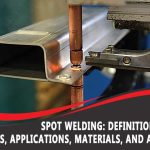
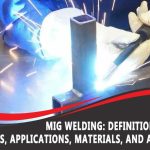
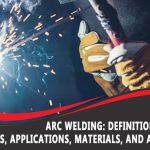
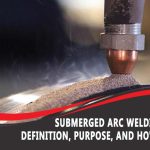
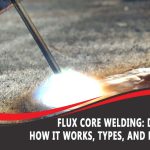
![Welding vs. Brazing vs. Soldering [ What is the main difference ] 11 Welding vs. Brazing vs. Soldering [ What is the main difference ]](https://www.021208.com/wp-content/uploads/2024/05/welding-1-860x430.jpg)
